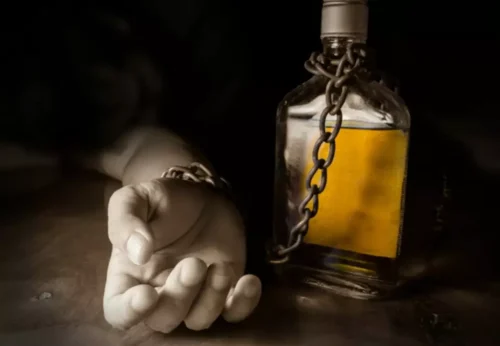
They will educate you on ABC Medication, breathing technique and nutrition. When that happens, it’s best to consult a professional to prevent the issue from becoming a full-blown alcoholism. These conditions combined can lead to coagulopathy (bruising and bleeding even with the slightest trauma). Alcohol addiction can cause various health issues, some of which include bruising and subcutaneous bleeding.
Do older adults bruise more easily?
This can help to reverse some early stages of liver disease. For example, stopping drinking once diagnosed with fatty liver disease may be able to reverse the condition within 2–6 weeks. Several factors increase the risk of alcoholic liver disease. Alcoholic hepatitis is a severe syndrome of alcoholic liver disease. Hepatitis is a general term for swelling and inflammation of the liver from any cause.

Drink Less Alcohol : Learn how to moderate with no pressure to quit
- An alcohol use disorder is a legitimate medical condition that causes lasting changes in the brain.
- The liver makes proteins that the blood needs for clotting, so if it’s not doing its job, you may bleed or bruise more easily.
- Other organs, such as the kidneys, and body systems such as the respiratory system, may also begin to fail.
But a serious bruise is more likely to be large, painful, swollen, or lumpy. Most bruises don’t need treatment because they heal on their own. This usually takes about 2 weeks, but many will heal sooner than that.
Liver
What all of this means is that people who live with an alcohol use disorder are likely to consume large quantities of alcohol. While some people may have just a drink or two on special occasions, people with an alcohol use disorder may lose control of their drinking, and consume ten or more drinks, for example. They may have such a high tolerance that they do not show any overt signs of intoxication, despite drinking large amounts. For the average healthy guy (say, drinking one or two drinks per night, https://ecosoberhouse.com/article/alcohol-vs-drugs-comparison-of-addictions/ or fewer than 14 drinks per week) the alcohol-related effects on bruising are temporary, and no real cause for concern.

Medical Professionals
- Cushing’s is most often caused by long-term use of corticosteroid medications, but it can also be caused by a tumor.
- This plan will help manage the condition as well as the withdrawal symptoms that may occur with abstinence.
- Blood-thinning medications may cause a person to bleed and bruise more.
- But damage to blood vessels below the skin causes them to rupture and leak blood.
Alcohol can also contribute to arrhythmias (irregular heartbeats) and hypertension (high blood pressure), increasing the risk of heart attack, stroke, and heart failure. This article discusses the long-term effects of alcohol, including the alcohol and bruising risks to your physical health and mental well-being. Alcohol is one of several substances that can damage your liver. Excessive alcohol consumption can cause fat to build up in your liver.

Alcoholic jaundice is usually found in the progressive, final stages of liver disease. Hence, seeking professional medical advice is crucial if you notice such symptoms. Stopping alcohol abruptly after long-term heavy drinking can also lead to alcohol withdrawal syndrome, which commonly manifests as symptoms like nausea and vomiting. Only a couple of drinks can cause vasodilation of blood vessels close to the skin, leading to potential bruising if you bump your body against a hard surface. Unhealthy alcohol use includes any alcohol use that puts your health or safety at risk or causes other alcohol-related problems.

Alcohol Addiction and Withdrawal
Alcohol is a central nervous system depressant that has immediate effects on the body, like intoxication (feeling drunk) and hangovers (unpleasant aftereffects from drinking). While these effects are short-lived, long-term alcohol use can trigger systemic (bodywide) inflammation, which damages the body’s tissues and vital organs over time. Severe alcoholic hepatitis can come on suddenly, such as after binge drinking, and can be life threatening.
Help to Stop Drinking
Quitting alcohol and treating this condition early on is the best way for a person to increase their chances of reversing or slowing the disease. In people with liver failure, the liver completely ceases to function. This can be an outcome of advanced-stage liver disease and often means that a liver transplant is the only option for prolonged survival. A liver transplant is a complicated procedure that depends on a donor’s availability.
- Learn the answer, as well as how to get help with medication assisted treatment for alcohol use, below.
- People with medium skin tones may see more red and yellow color in their bruises than people with lighter or darker skin tones.
- When that happens, the person is seemingly functional and appears normal to other people.
- Alcohol impairs your cerebellum, the part of your brain that’s responsible for coordinating your movements, Swartzwelder says.
- It usually takes about 6-9 months for a new nail to grow in.
- The liver is responsible for metabolizing or processing ethanol, the main component of alcohol.
Why is easy bruising so common in older adults?
- Aging skin becomes progressively thinner, making blood vessels more prone to injury.
- Easy bruising may also run in families, so individuals whose relatives bruise easily may notice that they do too.
- Some conditions can make it harder for your blood to clot, which may increase your chance of bruising and bleeding.
- Over time, the liver of a person who drinks heavily can become damaged and cause alcoholic liver disease.
- Right after a tattoo, it’s normal for your skin around your tattoo to be red, irritated, swollen, warm, and sometimes bruised.
If you notice that you or someone you know is bruise easily, it may be a sign of alcoholism. Dilated blood vessels can make bleeding more likely when you drink. If you have cirrhosis from alcohol liver damage, you’re also more likely to bleed and bruise easily.

Some conditions, such as pregnancy or breastfeeding, can temporarily increase the need for dietary iron. Bruising occurs more readily as a person ages, making age the most common cause of easy bruising. Aging skin becomes progressively thinner, making blood vessels more prone to injury. Alcohol is one of the leading causes of death in the United States, contributing to approximately 178,000 deaths annually. Over time, alcohol use takes a toll on your body and increases your risk of over 200 health conditions.